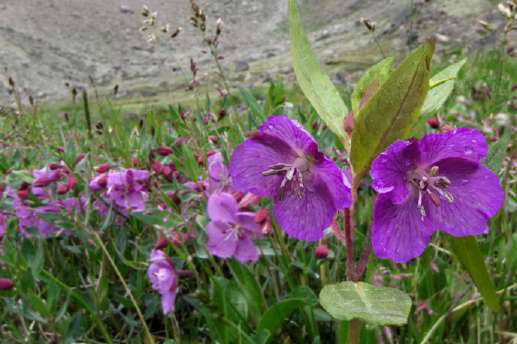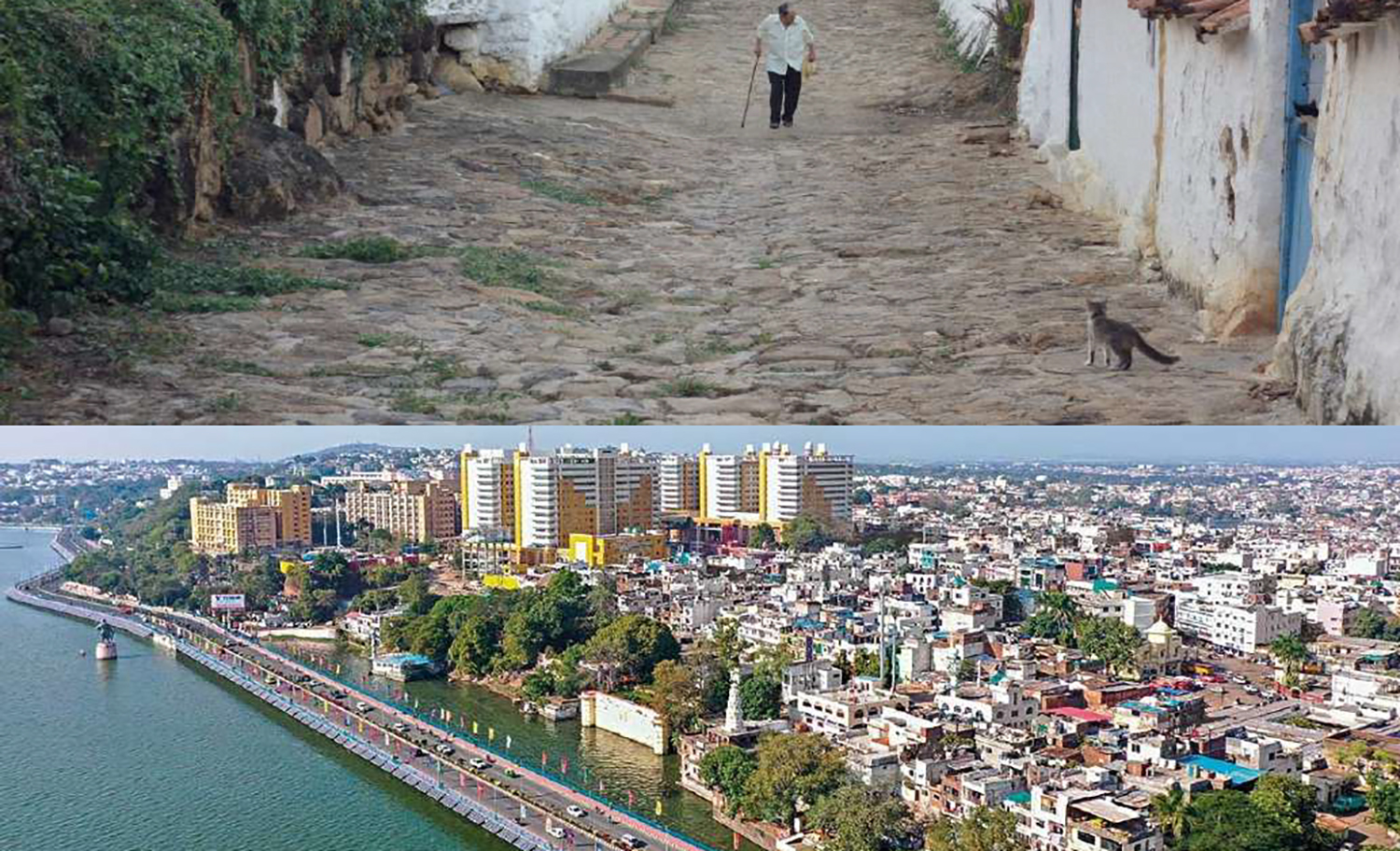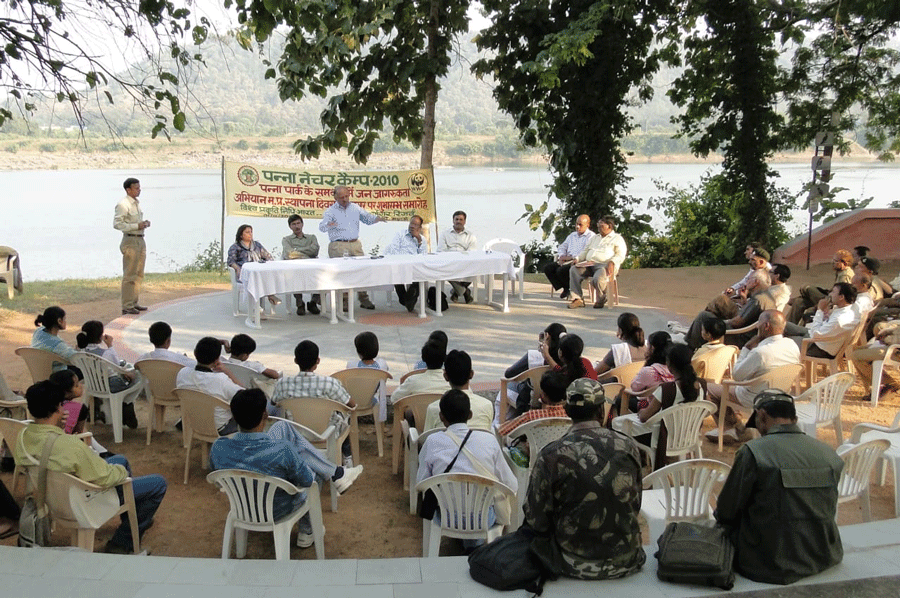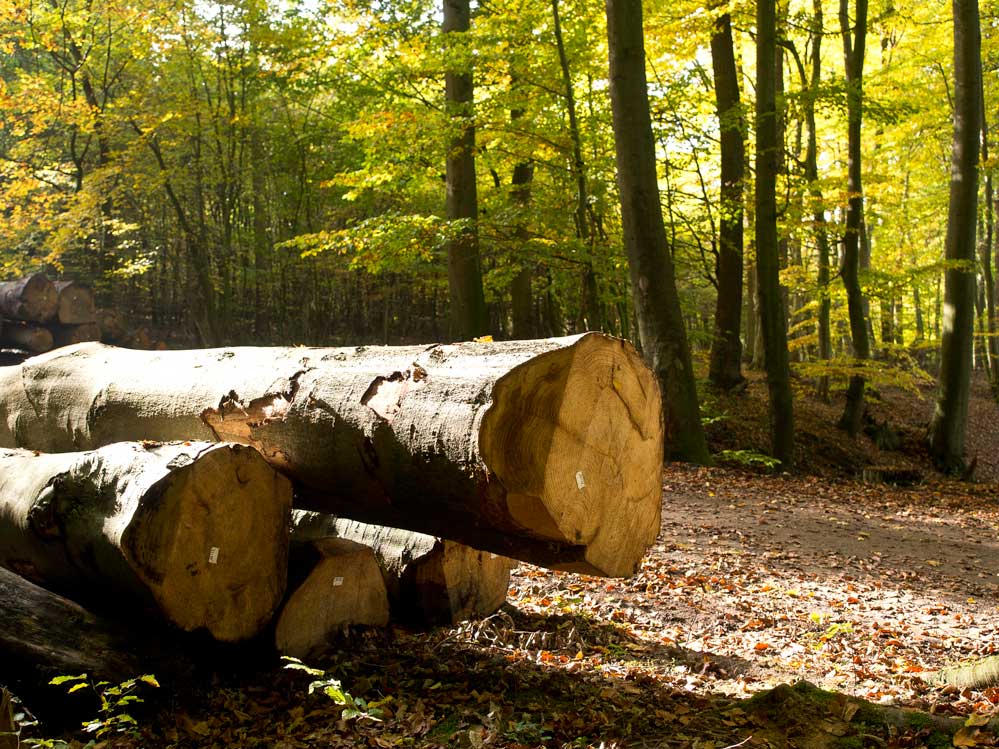MADHYA PRADESH FOREST DEPARTMENT: MOVING TO ACHIEVE SUSTAINABLE FOREST MANAGEMENT
-Dr. Ram Prasad
Introduction:
Creation of a separate department to manage the forests of India dates back to 1861-62. Madhya Pradesh or the Central Provinces as it was then known, was recognized as the most valuable landscape having equally valuable forests. It also signified the forest-based services by locating the Forest Department at Pachhmarhi which was considered as an epitome of Indian Forests. We have come a long way since then. The same spirit continues to guide the present Forest Department of Madhya Pradesh with the philosophy and traditions of old Forest Department. Without going into the details of the Princely States and reorganization of the State of Madhya Pradesh coming into being on 01 November 1956, it is desirable to look into what we possessed by way of r.ature’s gift and what we lost and gained in due course of time through the scientific management practiced by dedicated cadre of forest personnel in the State. The State had to face yet another division in year 2000 when Chhattisgarh was carved out of it. The matter of fact remains that the State boasts of having maximum area of forests in the country with over 95,000 sq km. The land is crisscrossed by mountain ranges like Vindhyas, Satpuras, Maikal and Aravalis and is drained by some of the mightiest rivers like Narmada, Chambal, Mahi, Tapti, Betwa, Ken and Son with several rivulets and other perennial streams providing lifeline to the welfare of the State. It is considered to be the tribal homeland of India with one out of every six tribal families having home in this State. Some of the high-tribal density areas also happen to be most forested and the per capita forest areas in such places is significantly high (over 0.6 ha or so). This demonstrates the symbiotic relation between tribal and forests. It is generally said that India is faced with the problem of conflict between “Tree – Tiger & Tribal”. Fortunately the state barring a few localized incidences has no history of any violent clash of interests of forests or its inhabitants.
The general experience in the State has been that the participatory forest management popularly known as Joint Forest Management is more successful in areas having high density of tribal population and extent of forests which demonstrates the intricate relationship between forests and its people. This has been the result of responsible political will and dedication of forestry cadre recognized throughout the country. The State being pioneer in introducing scientific forest management way back to 1864 (first working plan of Bori was prepared to build a foundation of sustainable forest management). This dedication continues and the State is inching towards attaining the goal of Sustainable Forest Management. Some of the highlights of the State forests and its management are discussed in the following paragraphs.
Sustainable Forest Management:
As defined by International Tropical Timber Organization (ITTO, 1998) to which India is an active member, ustainable Forest Management is the process of managing forests to achieve one or more clearly specified objectives of management with regard to the production of a continuous flow of desired forest products and services, without undue reduction in its inherent values and future productivity and without undue undesirable effects on the physical and social environment.
Sustainable Forest Management involves planning the production of wood and non-wood products for commercial purposes, as well as meeting local needs. It includes protection, or setting aside areas to be managed as plant or wildlife reserves, for recreational or environmental purposes. It ensures that conservation of forestlands for agriculture and other uses is done in properly planned and controlled way; it covers the regeneration of wastelands and degraded forests and establishment of forest plantations; it promotes integration of trees in farming landscape and agro-forestry; it calls for improved research and participatory planning; it covers prevention and mitigation of fires and restoration forestry. In short, Sustainable Forest Management is specific and practical action for translating the concept of sustainability into reality in forestry. This calls for the use of forest goods and services at levels that do not change the environment (including elimination of wasteful consumption), and within the regenerative capacity of forest estate.
Bringing forest harvests to sustainable levels, improving management practices, enhancing forest conservation, providing forest-derived benefits to a broader range of people, and offering non-distortionary incentives to individuals and corporations to encourage development of forest resources are all elements of a viable forest management system. Sustainable Forest Management is an enormous task involving money, manpower, materials and management. Governments have increasingly given the responsibility for Sustainable Forest Management to a broad range of private sector institutions; and that sector is undergoing both structural and functional changes. All activities for production and utilization of forest goods and services and conservation of forest resources enumerated as above are typical of the State of Madhya Pradesh which is unique in the country. Be the issue of wood products (from natural or planted sources), non-wood forest products to meet people’s bonafide requirements as well as contributing significantly to the household income of the gatherers, recreation through dedicated areas for wildlife conservation and management and environmental services, the case of Madhya Pradesh deserves special place in the country.
Unfortunately, the inherent capacity of the governance and the extent of resources through scientific management have not been properly documented to draw the attention of our political masters, academia and common citizens of the State. Stray incidences have often preoccupied the spaces in media and the citizens have been driven by them ignoring the potential and the system of governance they have in this State. Some of the forestry examples be it in the form of biodiversity, economic potential, people’s participation and equity in access and benefit sharing is unique to Madhya Pradesh. Today, it is hard to find any other State in the country which has the same record of scientific forest management in terms of timely preparation or revision of working plans. It is the pious duty of all foresters to be involved sometime or the other in their career, in the preparation of working plans. It is only in the State of Madhya Pradesh where exceptions are very few and even they have been deplored. In majority of cases, may be 99% or more, there is a compliance of this requirement. Should the State not recognize this single indicator of the commitment and competence of the State forestry cadre? Even the new State carved out of Madhya Pradesh recently is struggling to ensure this kind of compliance. Good thing is that the political leadership of the State has also recognized the fact that scientific forest management must be carried on no matter at what cost and accordingly, the State has been generous enough in ensuring sustainable flow of financial resources for full implementation of the prescriptions of working plan. The administrative exigencies have often not been applied in interfering with the mandated posting of foresters to the task of preparation of working plan. The following criteria would be good to evaluate the performance of Sustainable
Forest Management in the State:
- System of long, medium and short-term plan exists
- Annual allowable cut established
- Management information system is in operation
- Forest management units are clearly specified
- Management is based on forest inventory
- Reduced impact logging is being practiced
- Minimum acceptable standard of environmental conservation has been prescribed and adhered to
- Production is consistent with silvicultural systems
- Protection measures are in place to control pests, diseases, fires etc. Ability to attract viable investment is in evidence
- Social equity obligations are fulfilled
- Appropriate and non-distortionary incentives are adopted
- Effectiveness of monitoring and certification systems is ensured Without any exception, most of the above criteria will have good fit with the case of Madhya Pradesh Forest Department.

Production of wood, goods and services:
The country has about 50.8% of its recorded forest area as plantation, most of which will be accounted by Madhya Pradesh Forest Department. Although the State Forest Department did not come out with specific policy to dedicate certain areas as production forests but through different plans & schemes of the Govt. of India and the State, it has been pursuing the policy of creating roductive forests through natural or artificial egeneration. Madhya Pradesh Forest Development Corporation is stated to have raised about 200,000 ha of forest plantations, mostly teak and bamboo which are both economically important and have been part of the natural eco-system of the State. Today, one may be surprised that a State which already possessed luxuriant teak and bamboo forests, had to resort to the plantation of these species on large scale like what has been done by Madhya Pradesh Forest Development Corporation. Each hectare of these plantations have an estimated 200 cu m of merchantable biomass, which in today’s economy are worth about INR 100 billion. By no way this is a mean achievement. The capitalized value of planted forests in the State is envy of many other States of the country. It is bound to meet the gap between what the country is producing and how much it is importing. According to the study conducted by author for an outlook study for Asia-Pacific 2020, it has been stimated that by 2020, the country will have to import wood and wood-products worth US$ 12 billion. It is hoped that the State Forest Development Corporation as well as the State Forest Department will continue to strive for the best to bridge the enormous gap the country facing in demand and supply of forest products.
In terms of Minor Forest Produce (MFP) which are now called as non-timber forest products (NTFPs), including medicinal, aromatic and dye plants have been recognized not only as an economic resource of the State, but a group of products having tremendous value for the forest dependent people.
Madhya Pradesh State Minor Forest Produce (Trade and Development) Co-operative Federation Ltd. (MP-MFP-CFL), an autonomous body, is involved in the development of non-wood forest products, covering mostly the deciduous tropical forests of the State of Madhya Pradesh with the involvement of the large number of primary producer’s co-operatives in resource management, harvesting and trade. The prime purpose of the MP-MFP-CFL, established in 1984 is to save the MFP collectors from the clutches of middlemen and to empower the community in managing their own affairs through appropriate institutional arrangements; and, to ensure that the resources are sustainably managed and protected. Many years ago, Onida TV Company was marketing its products with advt. saying “Neighbour’s Envy & Owner’s Pride”. This aptly applies to MP-MFP-CFL as no other State could evolve the institutional structure, governance, transparency, resource conservation and sustainable development, access of communities to resources and benefit-sharing. It is again apt to say with great pride that “East or West, they are the best’. The enormity of resources, the management paradigm and benefit sharing mechanism practiced by the Federation has been lauded by ITTO in its report of Sustainable anagement of Tropical Forests -Private Sector Experiences, (Malaysia, 2004).
Madhya Pradesh has again the uniqueness by providing recreational services through the network of Protected Areas in the State with nine national parks and 25 wildlife sanctuaries. Fossil National Par of Ghughwa is only of its kind in the country, depicting the progressive policies of the State Government and Forest Department.
There are many such examples where State will not only be the first but also the best. Again, Madhya Pradesh is pioneer in launching a separate facility for promoting potential and a well-structured institutional framework for benefit sharing through harvest of timber, bamboo and NTFP, the State is also pioneer in recognizing private entrepreneurship in raising and harvesting forest plantations. The Lok Vaniki concept of the State has been recognized by Govt. of India and the Hon’ble Supreme Court of India.
Way Forward:
The State has been progressing towards attaining the objectives of Sustainable Forest Management through various plans and schemes of the State and the Govt. of India. It has the largest cadre of forestry personnel anaging the resources. What is needed is due recognition by the political masters as to how best the cadre and the forests can be managed for the benefit of the State as well as its people. The State has been very benevolent in patronizing and recognizing the various new initiatives of the Forest Department. However, it needs to segregate the performance versus non-performance.

Author: Retd. PCCF & HOFF M.P.












